
Menu

What to Put in a Puja Thali? What Items are used for Puja? What not to Use? How to perform Puja? Significance of Puja in Hinduism & More.
Puja is Adoration or Worship of the God with which who you share a devotional and emotional bond. Puja is the ceremonial worship of God to please him. Puja ranges from brief daily rituals in the home to elaborate rituals at the temple. In fact, as per or Vedas, a Puja is deemed complete hen Ahuti is given to Agni Dev in the form of a Homam. Thus, Puja and Homam share an intangible bond.
Puja is an integral part of the life of every Hindu and serves as a way for them to reach out to and connect with almighty. Flowers, Kumkum, Haldi, Bay leaves etc. are dedicated to the God and sacred mantras & shlokas mentioned in our Puranas are recited. The oneness achieved with God provides the devotee with immense peace, and the mantras form a protective shield around him.
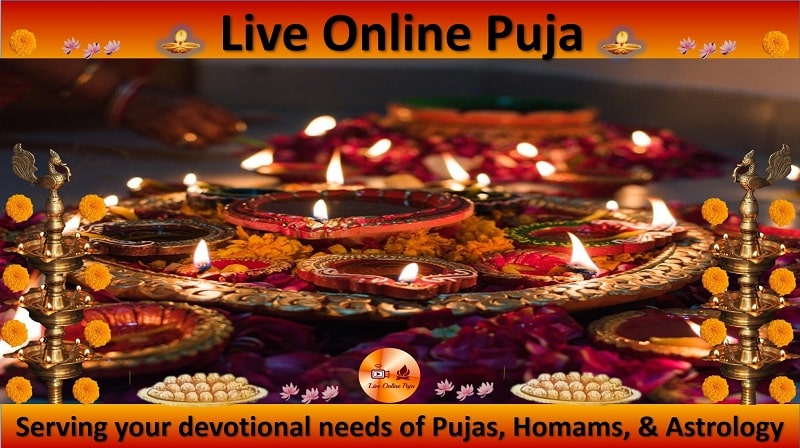
The components of a Puja, the mantras, and the steps involved differ according to the community, sect, part of the country, time of day, needs of the worshipper, festival, occasion, and religious text followed. The rituals forming part of Puja are typically performed in the morning, and on an auspicious time. Certain Pujas run throughout the day, where the Deity is gently roused from sleep with Prayers. The Puja continues through the day with rituals such as bathing and dressing of the Deity, followed by, Mantra chanting, Homam, offering of the three meals (prasad) to God and the final ritual of putting Deity to bed for the night.
1. Puja Thali – Thali is a plate of brass or copper or any other metal and can also be of leaves or bamboos. Kept in it are the useful items required in Puja like flowers, akshat, bilvapatra, incense, lamps, naivedya, sandalwood, etc.
2. Achaman – A small copper Lota (a type of urn) filled with water and some basil (Tulsi) leaves are put in it. It is always kept at the place of worship. This water is called “Achaman ka jal’. This water is taken thrice. It is believed that a person gets double the fruits of Puja by doing this.
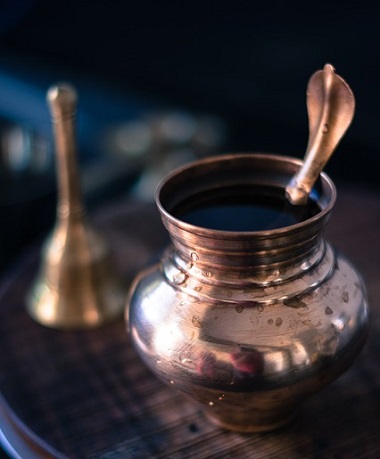
3. Panchamrit – Panchamrit means five types of nectar. Panchamrit is a mixture of milk, curd, honey, ghee, and pure water. Some make panchamrit by mixing milk, curd, ghee, sugar, honey. It has been confirmed that this combination has disease prevention properties.
4. Sandalwood – Sandalwood is a symbol of peace and coolness. A sandalwood stick or small block should remain at the place of worship. The fragrance of sandalwood eliminates negative thoughts of the mind. Sandalwood is applied to Shalagram (A type of idol of Lord Vishnu) and Shivling. By applying sandalwood on the forehead, the brain remains calm.
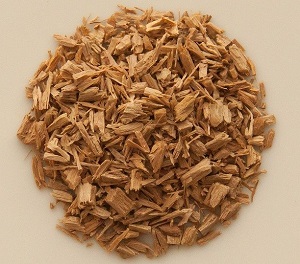
5. Akshat – A symbol of prosperity, derived from extreme labour, is rice which is called Akshat. The meaning of offering Akshat is that we will use our splendor not for ourselves but for the service of mankind.
6. Flower – Flowers are offered in front of the idol of the Deity. This is to awaken the feeling of beauty. It means that we should become beautiful from inside and outside.
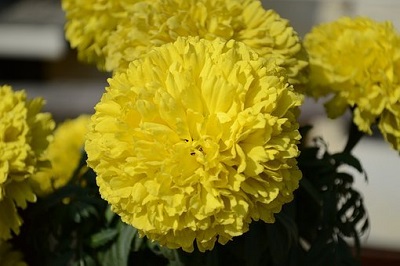
7. Naivedya – At the time of Puja, when any food item is presented to the Gods and Goddesses, that item is distributed as Prasad. It is called ‘Naivedya.’ Naivedya has sweetness. By keep offering Naivedya to the Goddess and the Gods invariable, sweetness, gentleness, and simplicity will remain in your life. Naivedya is offered with fruits, sweets, nuts, and panchamrit.
8. Roli – It is a red powder with turmeric mixed in it. Its name is also Kumkum. In each Puja, it is applied on the forehead with rice. It is considered auspicious. The red colour is also a symbol of courage. Applying Roli from bottom to top on the forehead symbolizes enhancing one’s qualities.
9. Dhoop – Dhoop spreads the aroma. The fragrance creates positive feelings and thoughts in the mind and brain. This makes the atmosphere of the home pure and fragrant. Aroma has great importance in life. Dhoop is not called incense sticks (Agarbati). Burn Dhoop instead of incense sticks in the house.
10. Deepak – The traditional lamp is made of clay. The five elements in it are soil, sky, water, fire, and air. It is said that the creation of the universe is made by these five elements. Therefore, the presence of five elements is mandatory in every Hindu ritual.
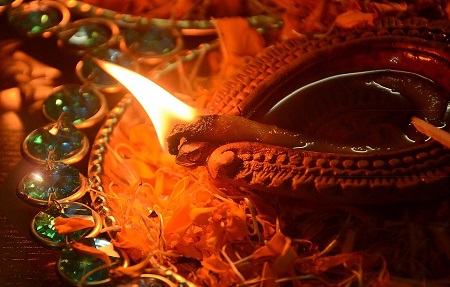
11. Garuda bell – The environment of the places where the sound of the bell rings regularly always remains pure and pious. This removes negative powers. Removing negativity opens the door to prosperity. Garuda bells are kept at the place of worship of the house.
12. Conch – Lakshmi resides in the house where the conch is. The conch is like God as the sun and the moon with Varuna (Air) in the middle, Brahma on the back, and Ganga and Saraswati rivers in the fore. The benefit that you get from pilgrimage, the same benefit comes from the Darshan (sighting) and worship of conch shells.
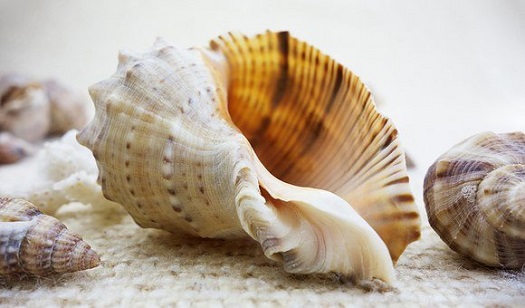
13. Jal Kalash – Kalash (Urn) filled with water is considered the seat of the Gods. Hindus consider water a pure element, which attracts God. It is also called Mangal Kalash. A bronze or copper urn is filled with water, and some mango leaves on its mouth and upon which a coconut is placed. Moli (thread made from thin red and white coloured threads considered sacred by Hindus)) is tied on the neck after making a mark of Swastik with Roli on the urn.
14. Copper Coin – Copper has a greater ability to generate positive waves than other metals. Rising waves in the urn enter the atmosphere. If you put copper coin in the urn, then it will open the doors of peace and prosperity in the house. These measures are definitely small to see, but their effect is tremendous.
15. Durva – A type of green grass used in religious rituals.
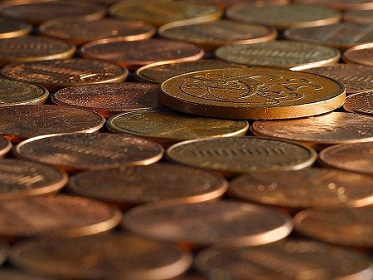
One essential part of Puja is Aarti, without which Puja is not considered complete. From the point of view of holy scriptures, our creation involves the mixture of five elements, and the same elements are invoked during the Puja including Sky, Air, Fire, Water, and Earth. It is believed that the sky has originated from the soul, the air from the sky, the fire from the air, the water from the fire, and the earth from the water.
In the order in which these five elements are produced, they merge into each other in the same order and ultimately merge into the divine. When we offer the Aarti in front of our presiding Deity, we try to achieve both the actions that originate and merge in the Lord – first, the accomplishment and attainment of our intention through worship and secondly, after the end of life, the attainment of salvation. Aarti is the waving of lighted lamps before an image of a deity. During Aarti, the devotee circles the lamp three or more times in a clockwise direction while singing a devotional hymn in praise of the Deity being worshipped. It is also a part of many domestic ceremonies.
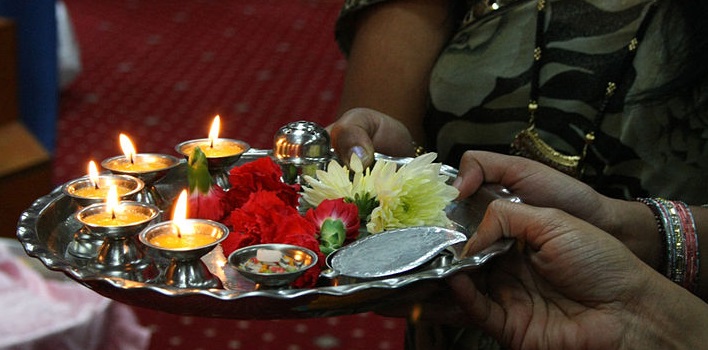
There exists strict Vedic Guidelines to direct us about the dos and don’ts involved with a Puja for a deity. These rules must be followed, for true completion, and to achieve positive effects from a Puja. Just like the planets that rule our lives have a certain pattern they follow, following the correct proceedings when performing a Puja is essential for fruitfulness. But, most of us are unaware about these rules and need guidance of experienced Priests. In such a situation, these tips can overcome complications to some extent:
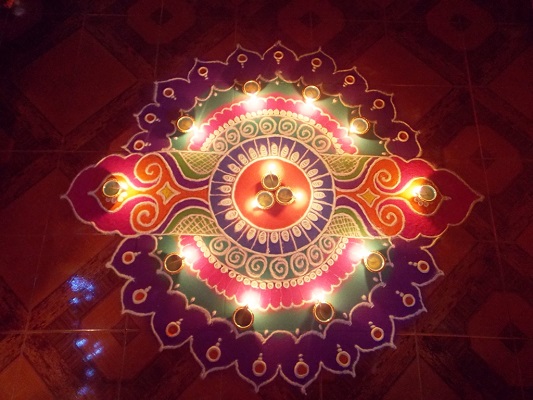
1. What Not To Offer? – Do not offer Rice to Lord Vishnu, Basil to Lord Ganesha, Durva to Goddess, and Bilva Patra (leaves) to Surya Dev should never be offered.
2. What To Offer? God will be pleased with these offerings: Bilva Patra (Bel leave) to Shiva, Tulsi to Vishnu, Green Durva to Ganesha, Red Kaner (Oleander) flowers to Sun God and cloves and red flowers to Maa Durga are very dear.
3. Where & What To Keep In Puja? The diyas and agarbatti should be kept so that it faces the Idol of the God. Specifically, if the diya contains ghee, it should always be kept on the right side and the diya containing oil must be on the left side of the Idol. Things like kalash with water (urn) and the bell for aarrti should always be kept on the left side.
4. How To Apply Tilak To God? Sandalwood-tilak is ideal for application on an Idol of God. During application, keep in mind that Tilak or vermilion is applied to the Gods and Goddess with anamika (third finger of hand).
5. Avoid This When Applying Tilak to Yourself or Others – Do not take the tilak that is applied to or dedicated for an Idol of God and use it on yourself or others.
6. How to Light the Dhoop-Deep or Diya for Aarti? While preparing for the Aarti of God, never use the light of one Diya to burn another Diya, incense (Dhoop), or camphor. Each lamp must be lit separately to maintain its pure energy.
7. If Any Puja Material Is Missing – If there is a shortage of any material in the Puja, do not get upset or leave the Puja in the middle. In such a situation, offer rice, milk, or flowers to God and perform Mansik Jaap (psychological prayer).
Puja has an immense significance in the life of a devotee. It is the way for a devotee to reach out and connect with the one he has faith in. A person always wants the grace of the Gods and Guru he believes in. He wants his God to always be with him, holding his hand in every venture of his life. Every devotee needs the guidance of God, and he gains it using elaborate Puja rituals to get the blessings of Gods and Goddesses.
Apart from Dharmakshetra (Religious field), Puja is also very important in Karmakshetra (field of work). Thus, good deeds such as Brahman Bhoj, donation of Chara for Cows (food donation), donation to the needy etc. are as significant as Puja and provide equivalent benefits to the devotee.
Just as any work done in the wrong way is not fruitful; similarly, Puja must be done by following all the guidelines mentioned in the Vedas to reap its full benefits. Live Online Puja makes it possible for you get a personalized Puja done with all Vedic Rituals followed. The Pujas are performed Live on an auspicious time based on your Kundali by our Pandits who have years of experience in Puja rituals (karmkand).
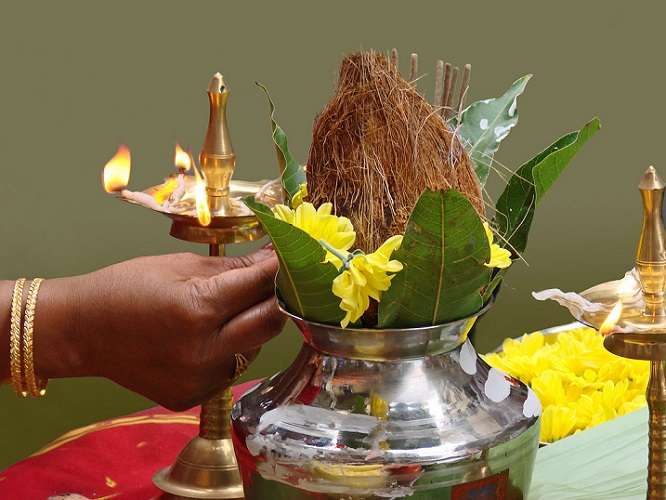
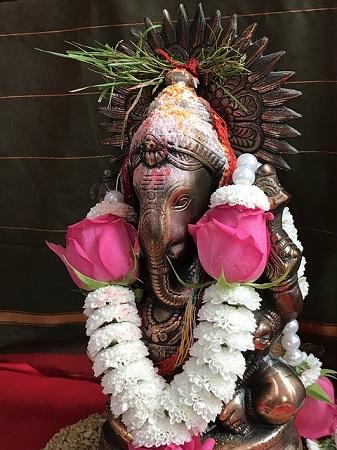
1. Ganesha Ji likes all the leaves except Tulsi’s leave. Tulsi is also not acceptable in Bhairava Puja.
2. Tulsi leaves that are broken or damaged are not accepted by Deity.
3. Do not break the durva on Sunday.
4. The lamp lit in front of the gods should not be extinguished, even after the completion of Puja. Let the Diya burn itself out over time.
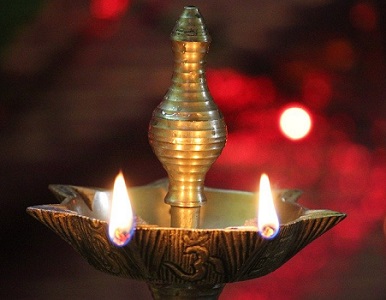
5. If Guru Dev, the eldest person, or a revered person, comes during the Puja, then he/she must be greeted and the Puja must be re-started after taking his blessings.
6. If all the things cannot be obtained for Panchamrit, then using only milk will serve the purpose.
7. Burning the lamp with a lamp (diya) makes the person poor and sick, by taking away the positive energy from the Diyas. Burning incense sticks with a lamp is also a factor of impoverishment.
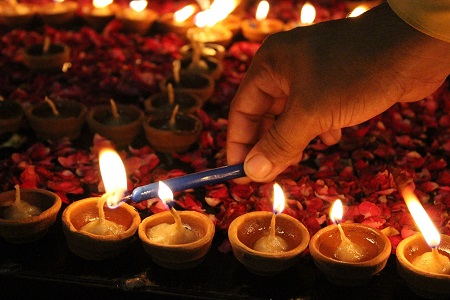
8. Do not keep the Diyas in a south-facing firection.
9. Do not break Tulsi leaves on Dwadashi, Sankranti, Sundays, and evenings.
10. Do not rub the idol with your thumb if bathing God before or after Puja.
11. Never offer turmeric to Lord Shiva while worshiping him.
The Puja Room (place of worship) in the house is very important. Mistakes related to a Puja Room built in the home can cause significant damage. In Hinduism, idol worship has special significance. Where to place which idol in the house and in which direction should been determined using Vastu. Based on Vastu priciples, if you want to establish Shivling in the house, you should keep an idol of the Lord Shiva family as well in the place of worship. Never keep the Shivling alone.
For every kind of happiness and prosperity in the house, it is considered auspicious to place a statue or picture of the Shiva family. No such idol or picture of God should be kept in the Puja Room of the house, which is in the posture of war or in which the form of God is seen as angry. Here are some things of Vastu that should be kept in mind while building a Puja Room in the house:
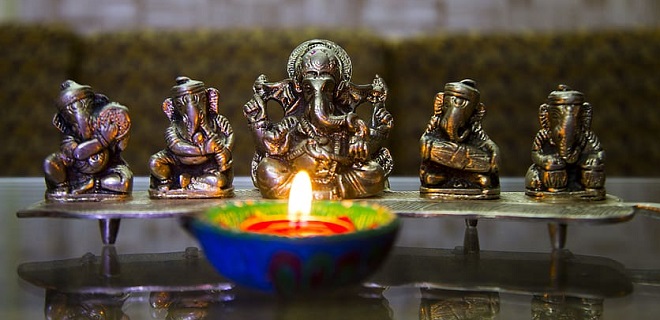
• The Puja Room location in the house should always be in the northeast. While performing the Puja, the person should be facing the east direction; by this, the best fruits are obtained.
• Ideally, the Puja Room in the house should be built in such a place where the sunlight must reach for some time in the day. Sunlight dissipates the negative energy of the atmosphere and increases the positive energy.
• The Puja Room should be covered with curtains every night before going to sleep. Just like we do not like any kind of disturbance while sleeping, the curtain should be covered on the temple in the same sense. So that there is no hindrance in God’s rest.
• No idol of God should be kept in the bedroom. While the picture of Radha and Krishna swinging can be put in the bedroom.
• Very large idols of Deities should not be placed in the Puja Room at home.
• No fragmentary idols should ever be kept at the Puja Room in the house.
• The Puja Room should never be built in the west and south directions of the house.
• The Puja Room of the house should not be in the kitchen or near the toilet.
• Also, never build a Puja Room under the stairs.
• A picture of Lord Ganesha in sitting posture in the house and Ganesh Ji in standing posture at the workplace should be put in the Puja Room.
• Ganapati Ji’s idol or pictures can be placed in any part of the house or workplace, but while placing the statue, keep in mind that in any case, his face should not be in the south direction or placed in the southwest corner. This has the opposite effect.
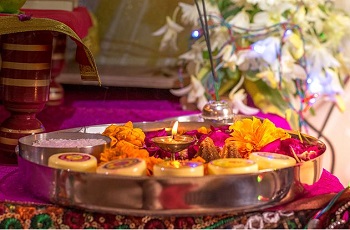
The following items are definitely present in the Puja Thali:
• Roli or turmeric for Tilak
• Akshat (Uncooked Whole Rice)
• Lamp
• Coconut
• Flower
• Sweet for Prasad
• Water in a vessel
Aarti of the Deity is also done by lighting a lamp, Diya, or incense stick in the Puja Thali. At the festival of Rakshabandhan, the sister performs the Aarti of the brother. The bride’s Aarti is done from the same Thali at the time of marriage, and the bride is welcomed by doing the Aarti through this Thali on her in-laws’ arrival. On Lord Satyanarayana Katha or other mass religious occasions, they carry the Puja Thali among the devotees after the Aarti.
Devotees take the lau from the sacred fire of Diya after the Aarti and put the money as Dakshina on this Thali. Puja Thali is also used while going to the temples for Darshan. Outside some temples, prepared and pre-made Puja Thali for Darshan can be found, which are made of leaves or bamboo. Puja Thali decoration is considered an art. Nowadays, artistic Puja Thali prepared for various festivals are available in the market.
Got Questions? Contact Us Now:
Contact Number:
+ 1 – 647-540-2812 (Canada & USA #)
+ 91 – 888-268-1484 (India # – WhatsApp & BOTIM)
Email:
contact@liveonlinepuja.com